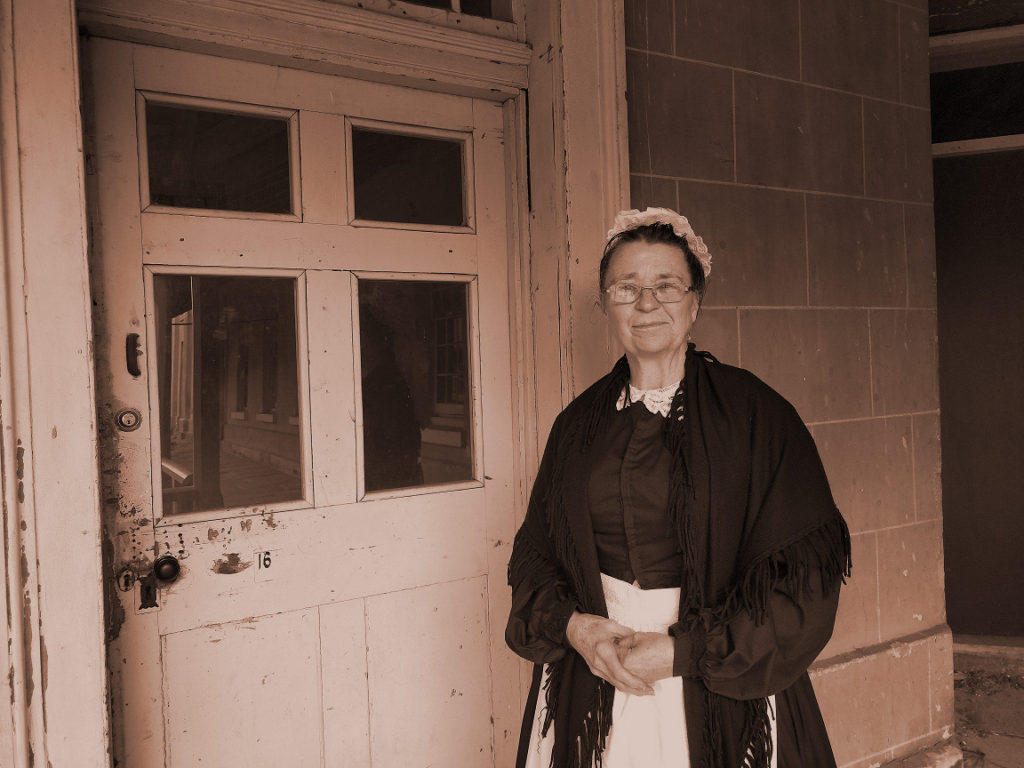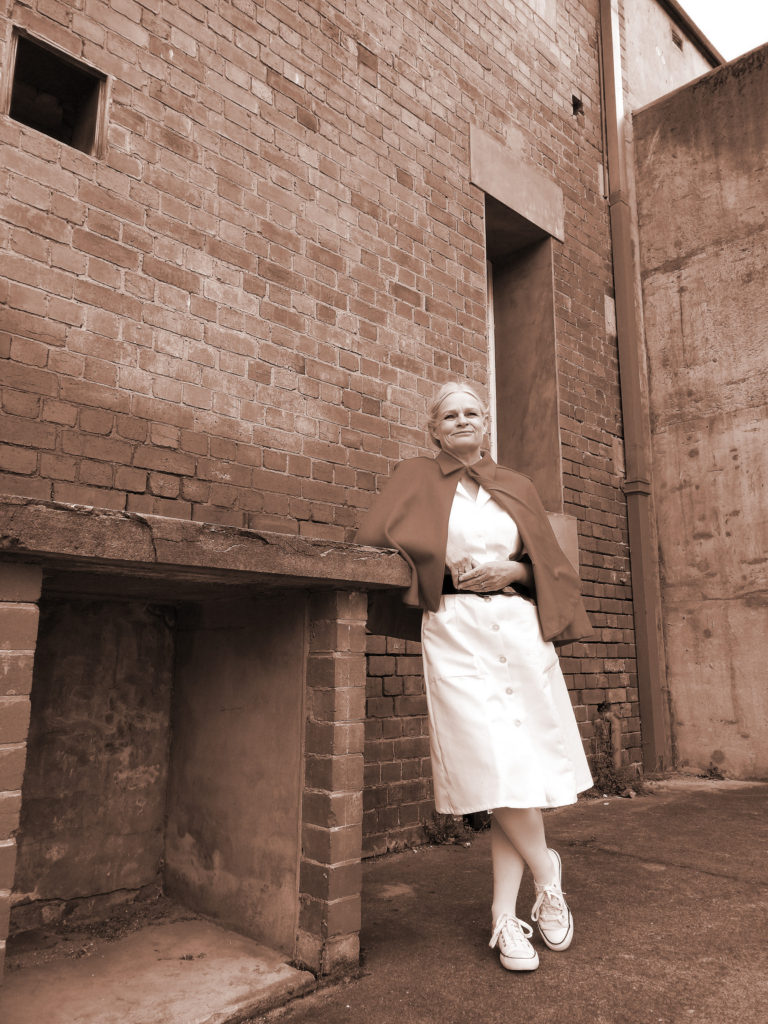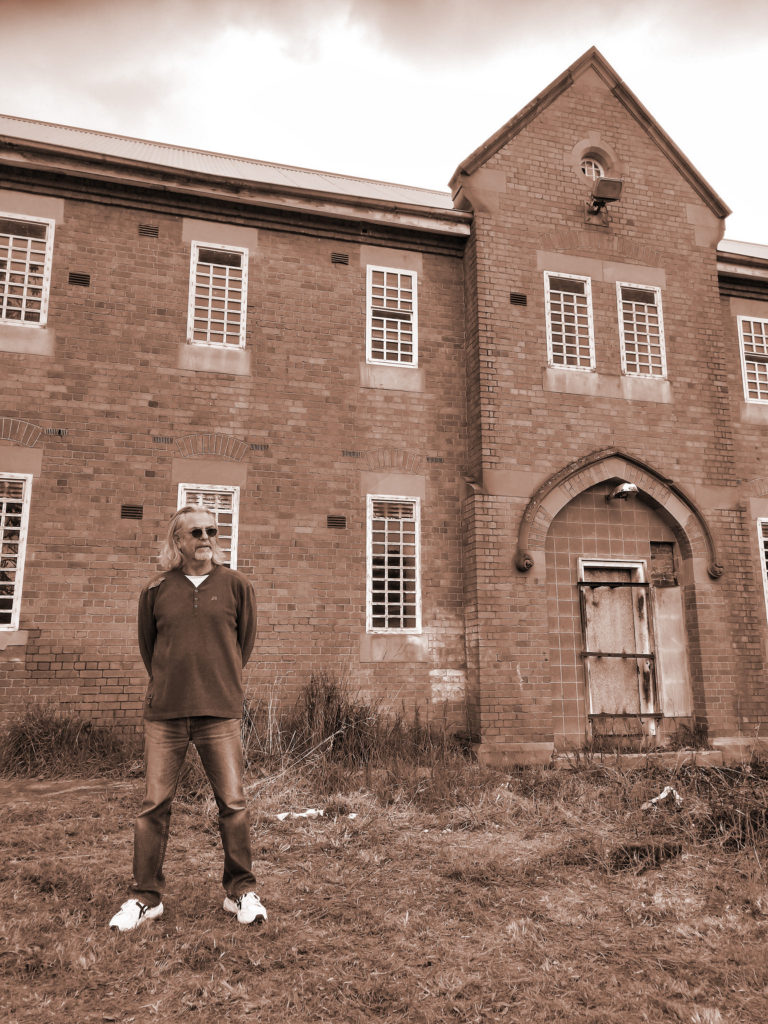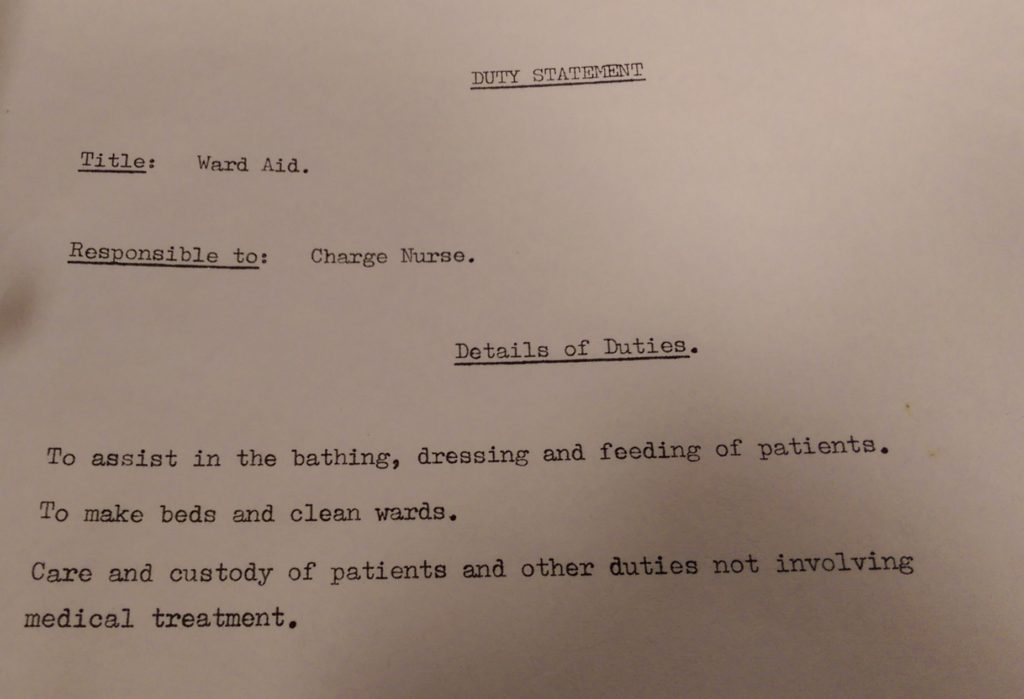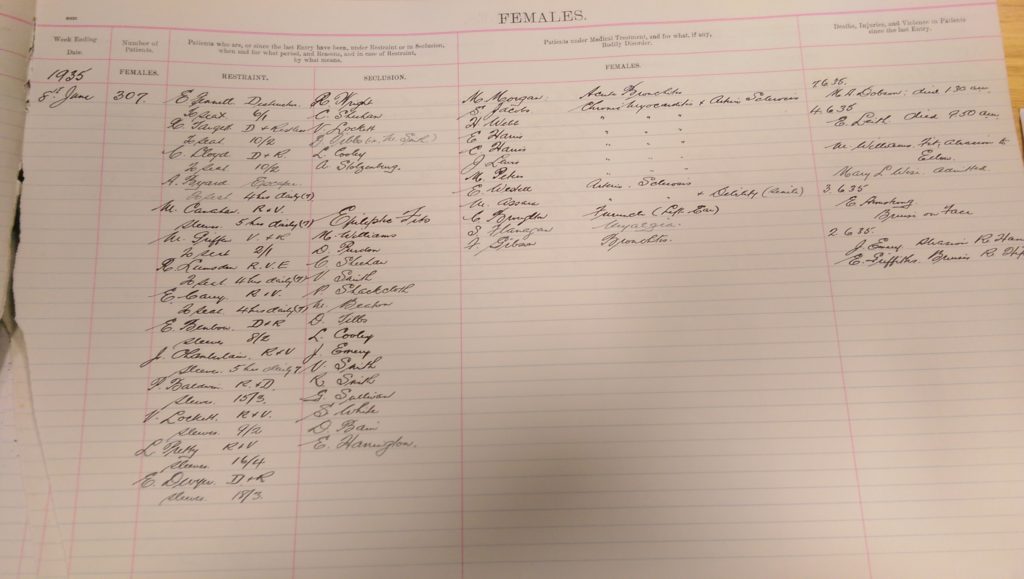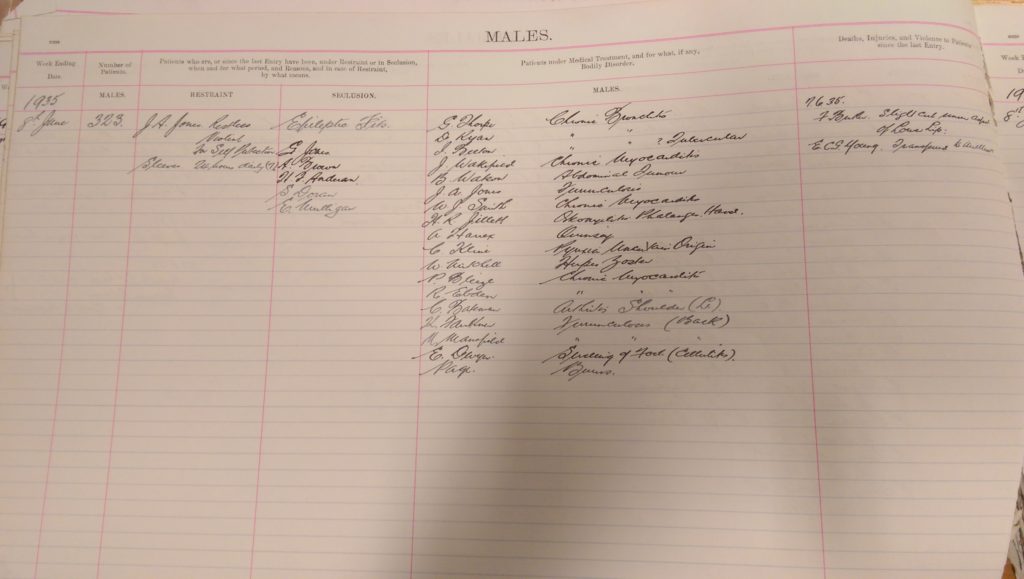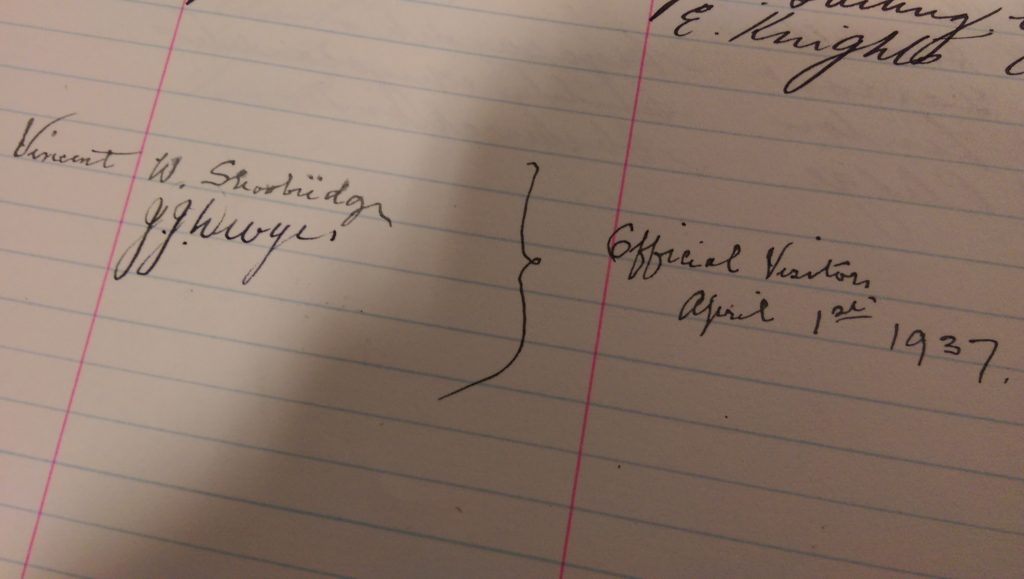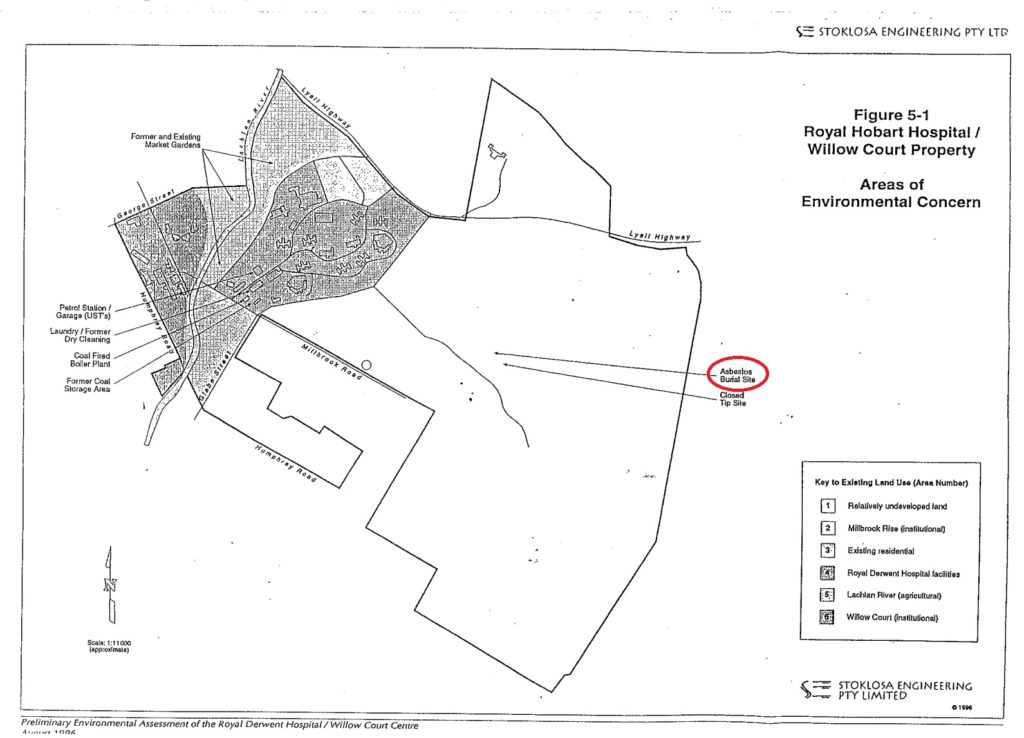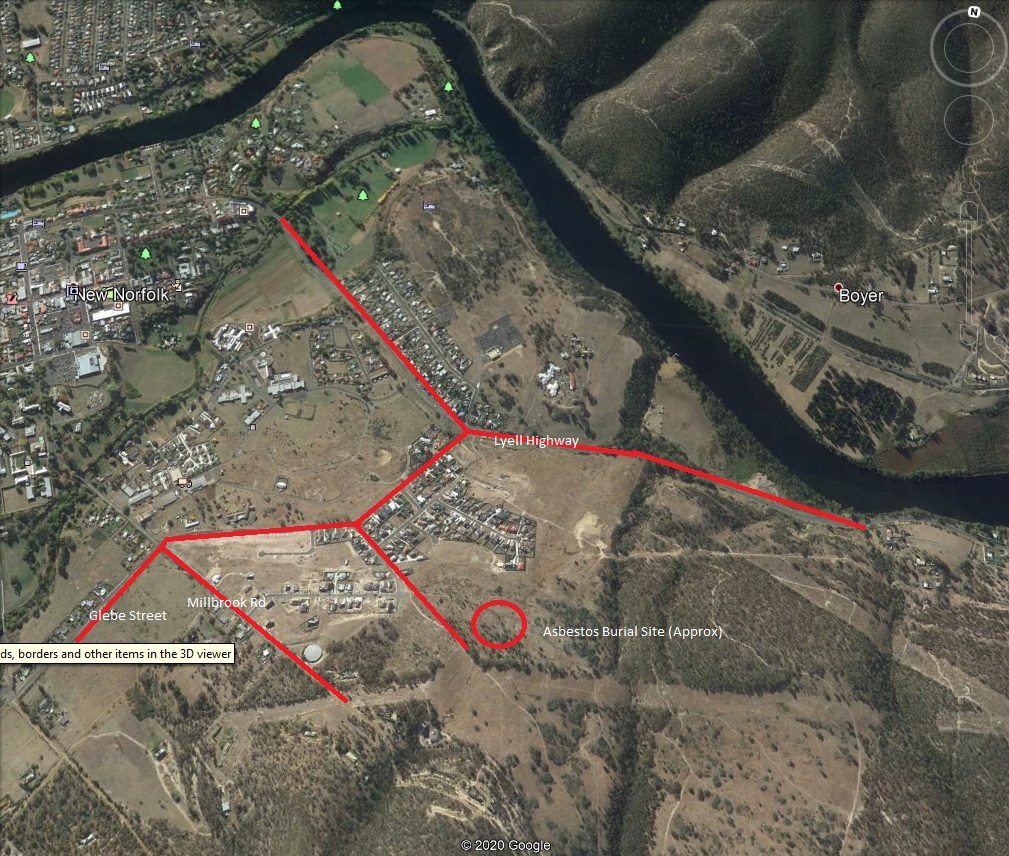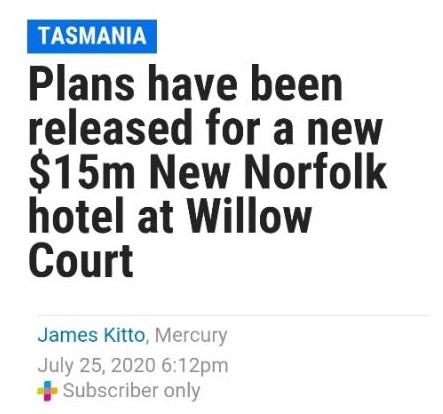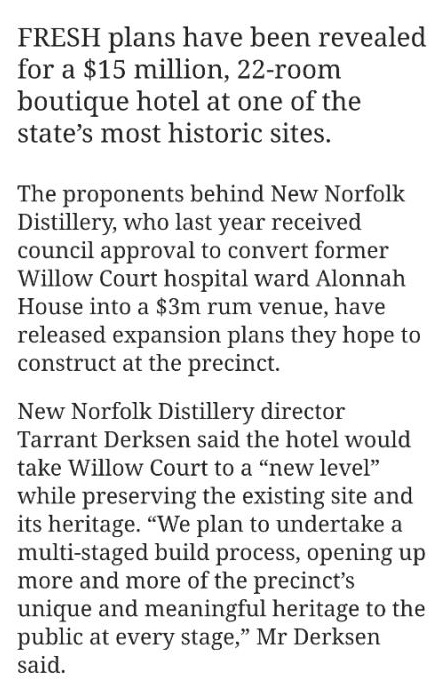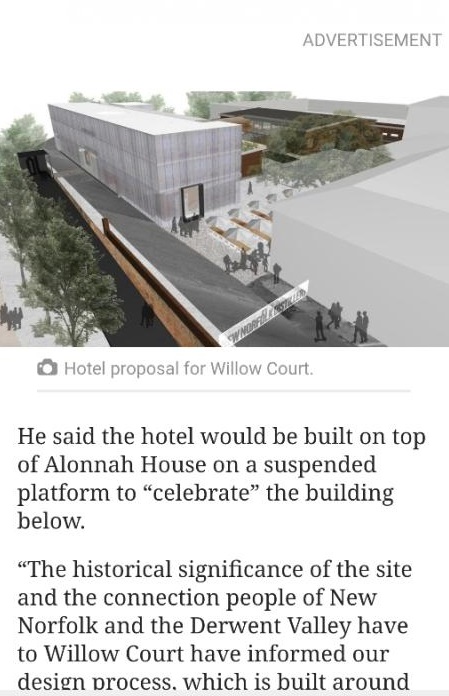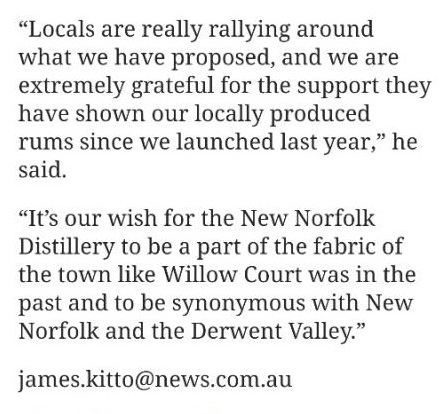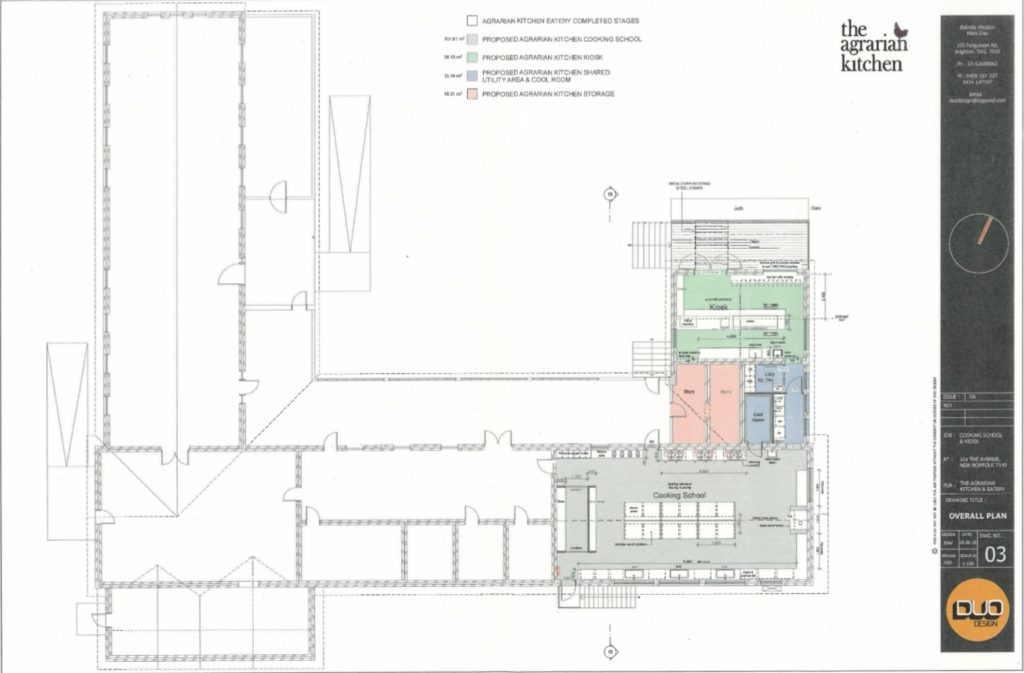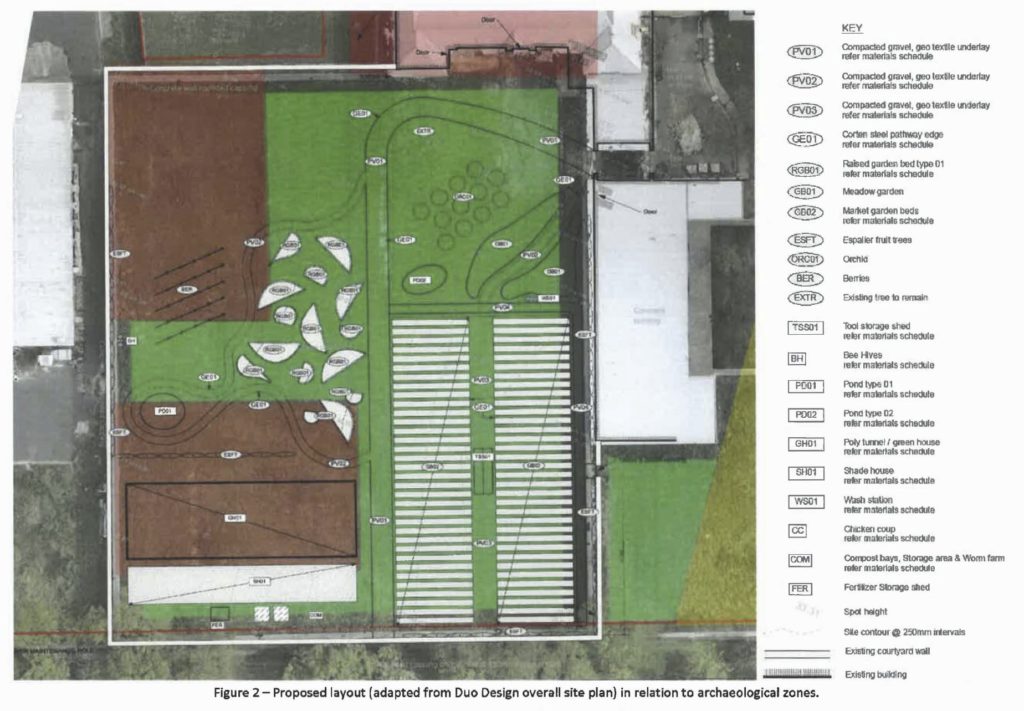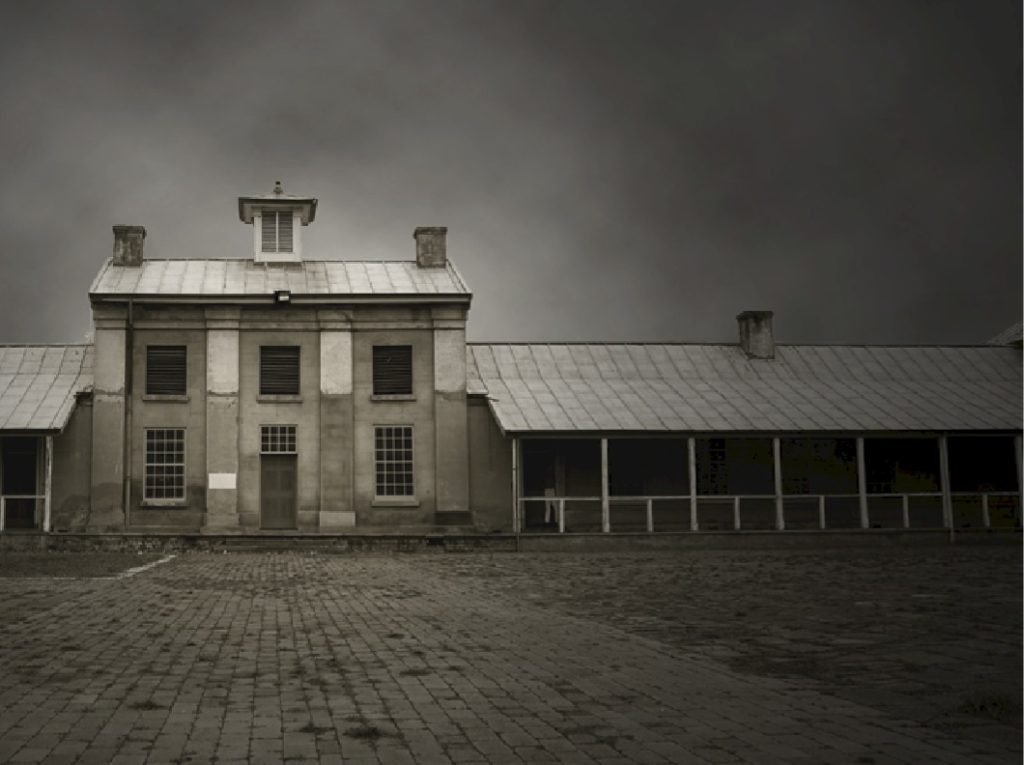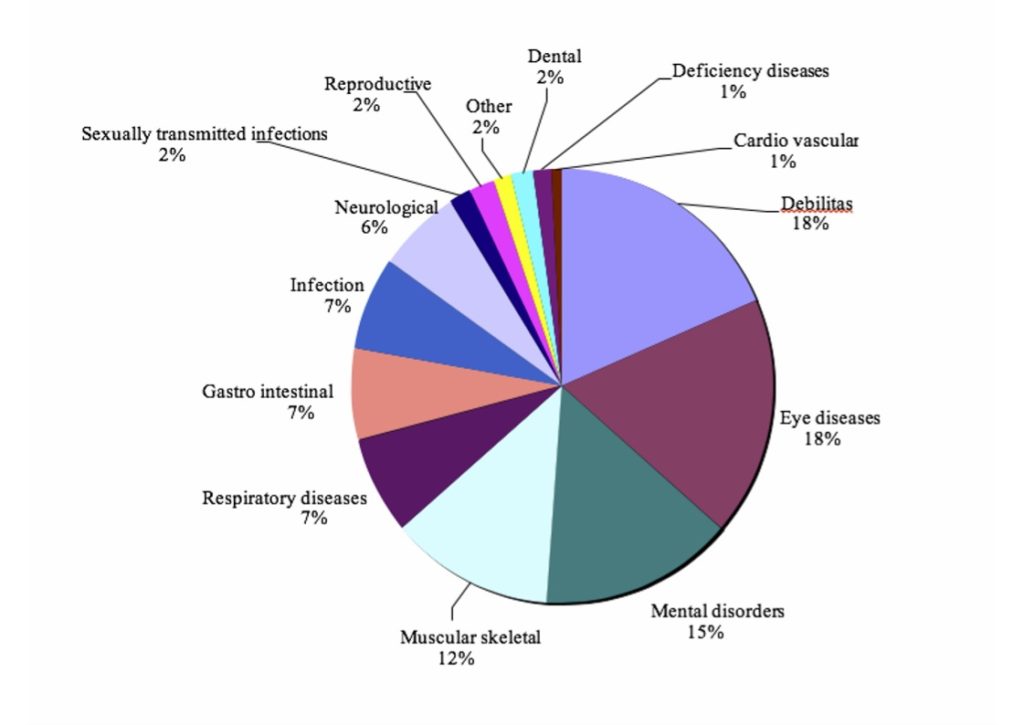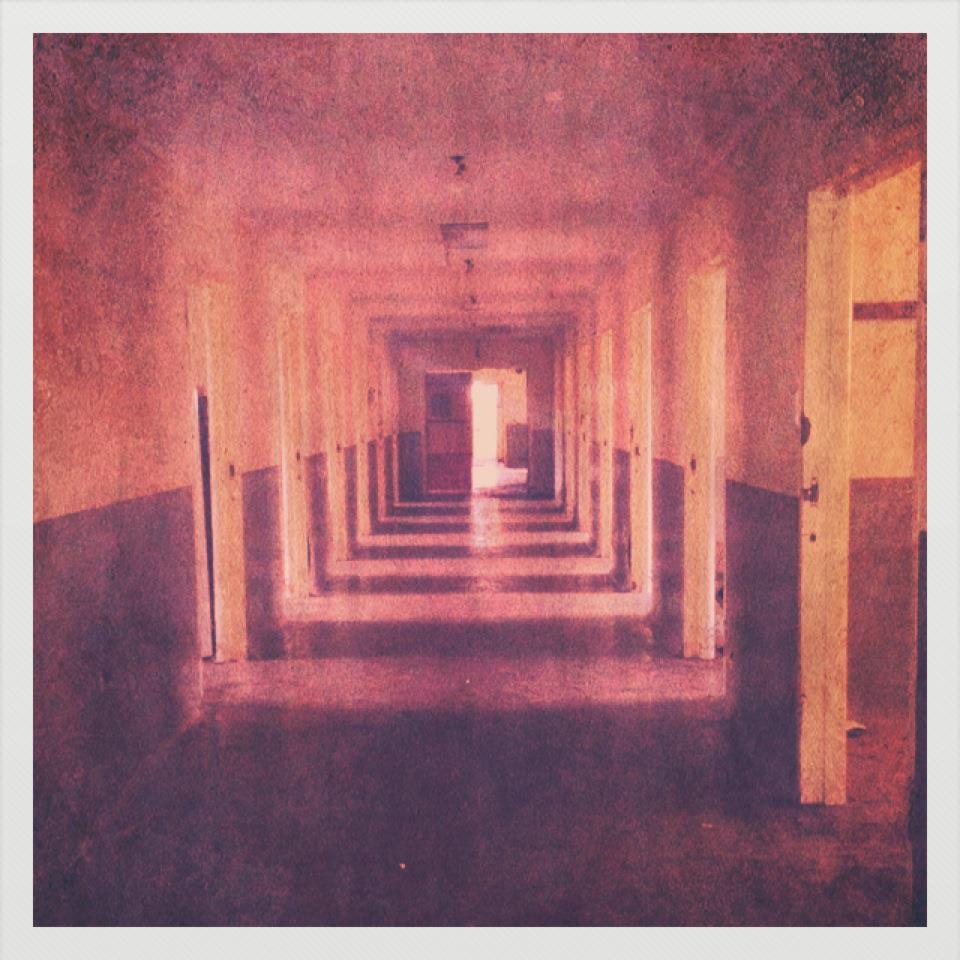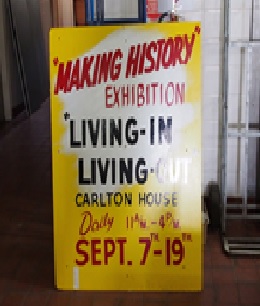These were turbulent times twenty years ago, the few years that led to the closure of the Willow Court Training Centre had brought a lot of pain and shame to the hospital’s staff, administrators and the Board of the Royal Derwent Hospital. All were to blame, including the Government of the day, if you were to have read and listened to the media, even staff were spat on in the streets leading up to the closure of the Willow Court Training Centre.
Two nurses had blown the whistle and alerted the media of conditions for the residents in the hospital, the Government called for a investigative report as did the Parents and Friends of Willow Court.
Ree Pettifer a Nurse investigator was appointed and produced a report (Full Report https://willowcourttasmania.org/2018/01/10/full-ree-pettifer-report-1989/) The 61 page report added weight to the whistleblower’s claims and the Hospital’s future was announced.
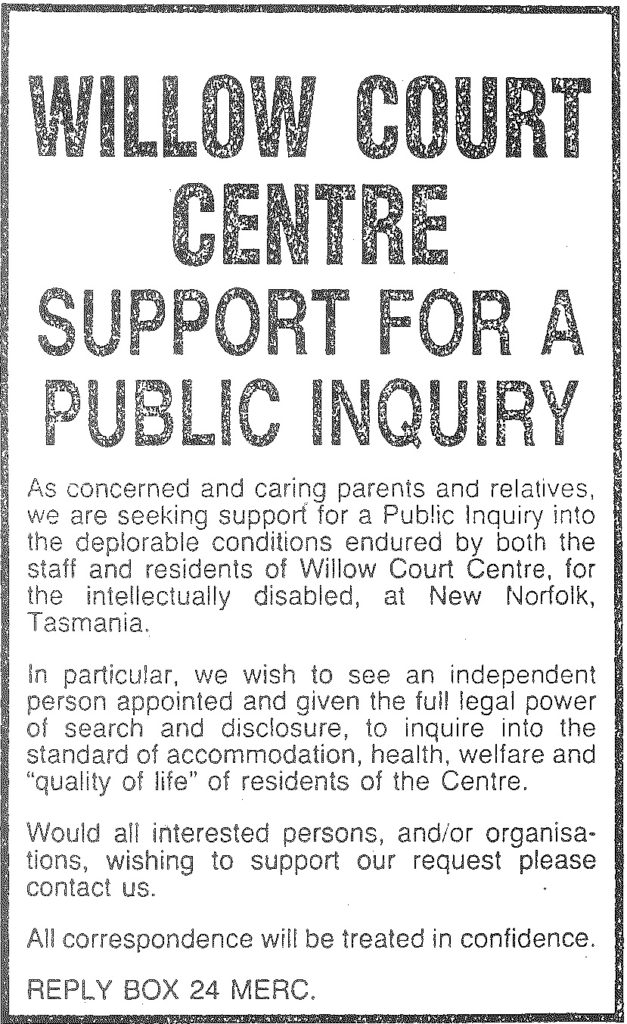
Morale plummeted at the hospital according to the Board’s Chairman and staff felt helpless to respond to the media attacks. An announcement by the Mental Health Commission stated that “there would be no job losses” as the Hospital and the Government adopted the Principle of deinstitutionalisation. The announcement was stated by the then, Minister for Community Welfare and the Elderly, Judy Jackson. It wasn’t long before this was a political issue with all sides raging at the conditions and living arrangements.
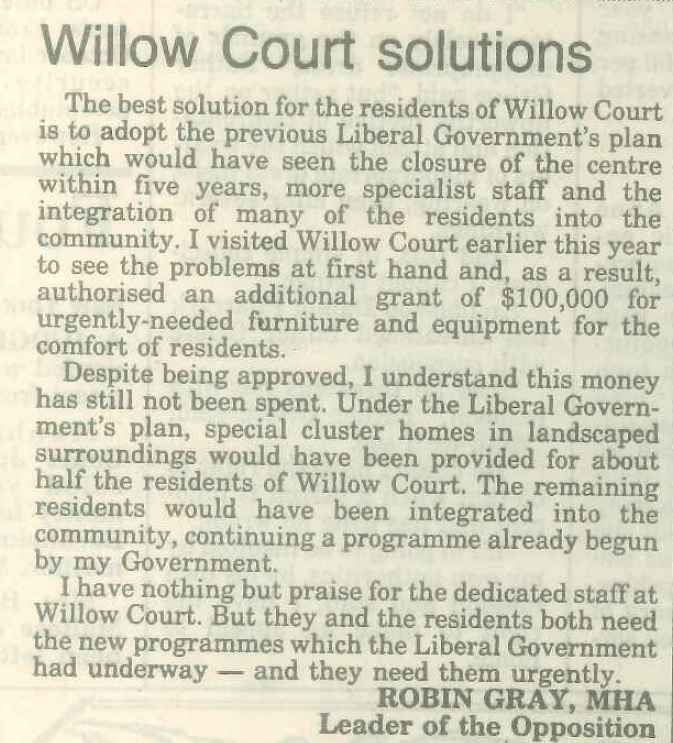
The Board invited the media in to view the conditions and meet the residents. Some of the media stayed the whole day while others couldn’t stand the sights and sounds of people they had been so protected from that they left soon after arriving. Families were confused and worried for their family members that were residents, and started to organise and write to the Minister and the News Papers.
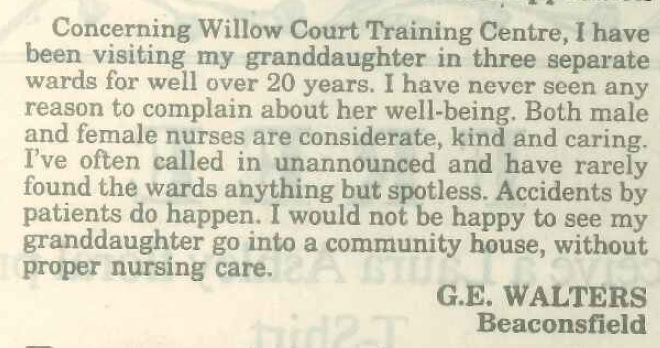
Although this all happened 20 (plus) years ago some of the pain is easily brought to the surface of individuals who were involved. Raw emotions have been captured in audio interviews, denials, accusations and stories of retribution have all been told and recorded. Some interviewees have requested that their audio not be released while they are still alive, while others want the anger felt in the public domain.
Perhaps it’s still to early too remember and relive all these thoughts for some people, however for the previous residents the slow deinstitutionalisation process brought an new hope and most residents moved with some fear into what was a huge social change. Most residents never looked back, but some wanted to live in the town that they had known all their lives and this is why New Norfolk has one of the highest populations of Group Homes in Tasmania today.
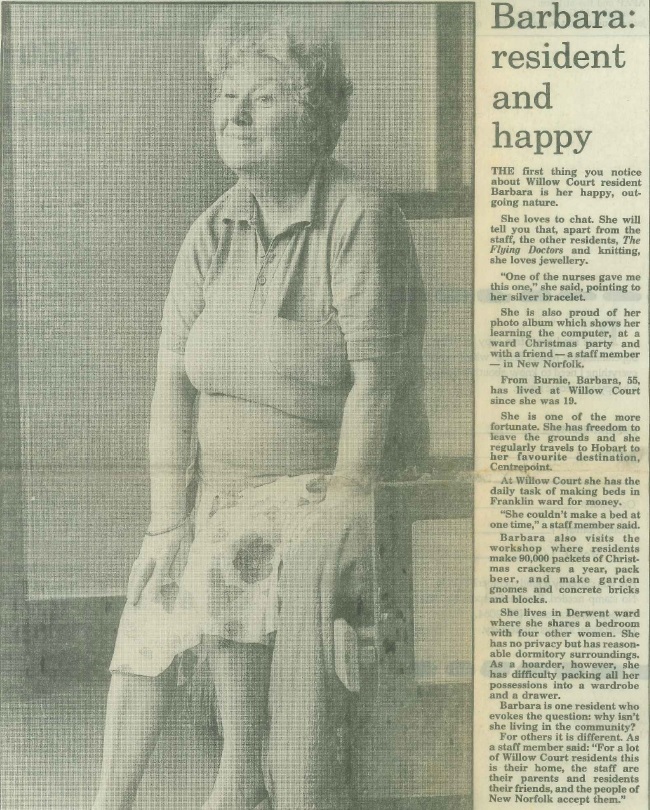
This again is all changing as we see the roll out of the National Disability Insurance Scheme, reported to be one of the biggest social changes in Australia’s history. But for many people living with disability, social changes are only just starting to bring access and equity too those that this has been denied for so long.
